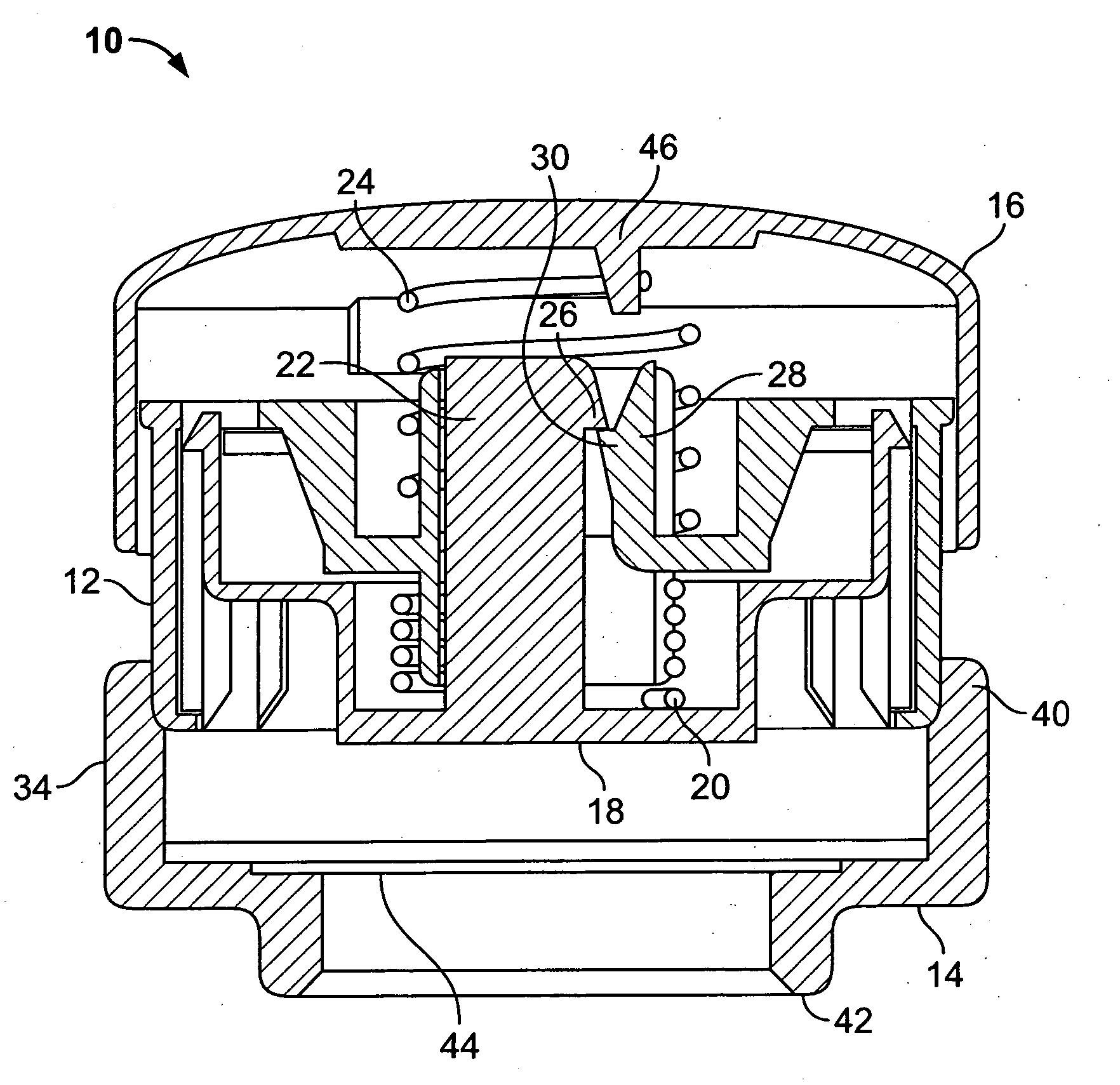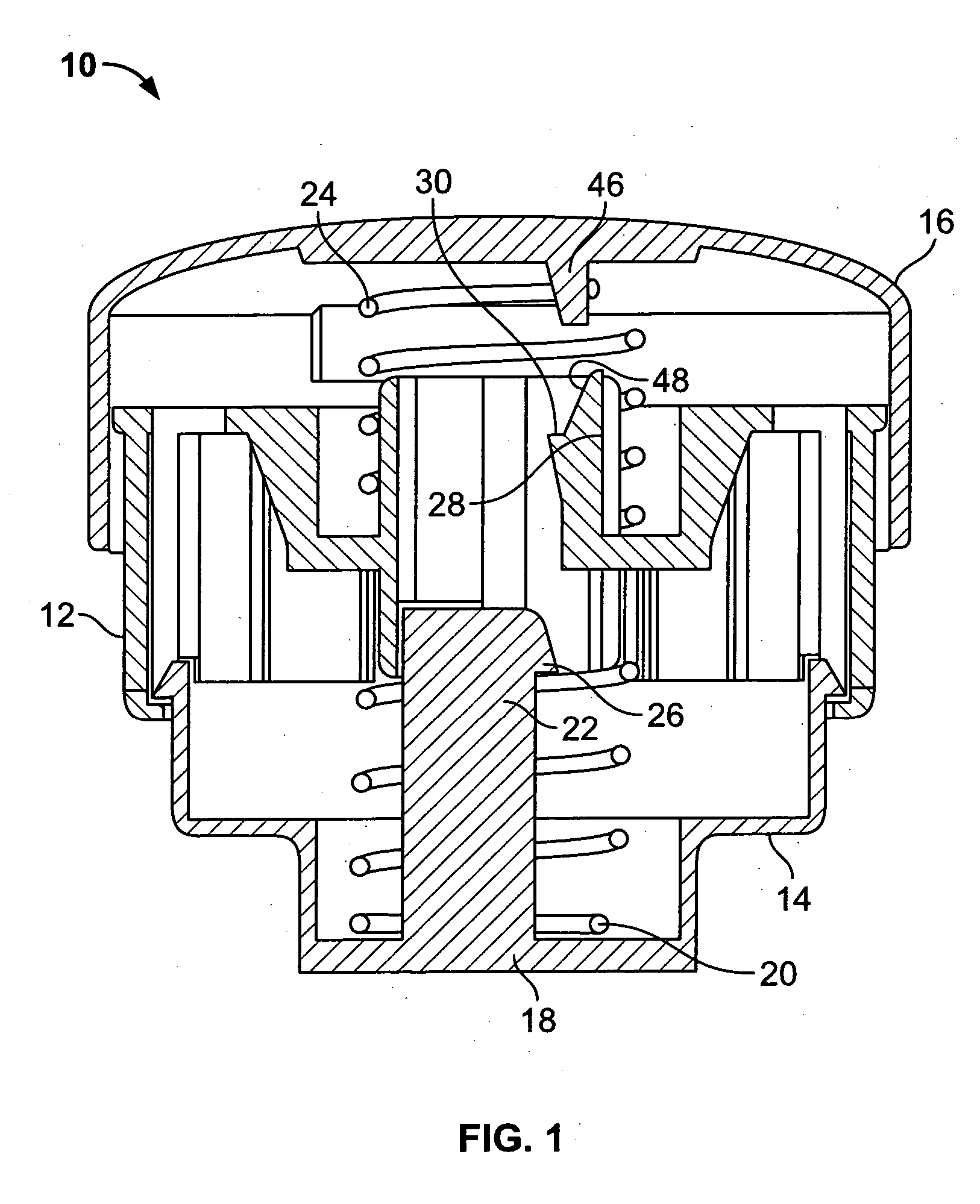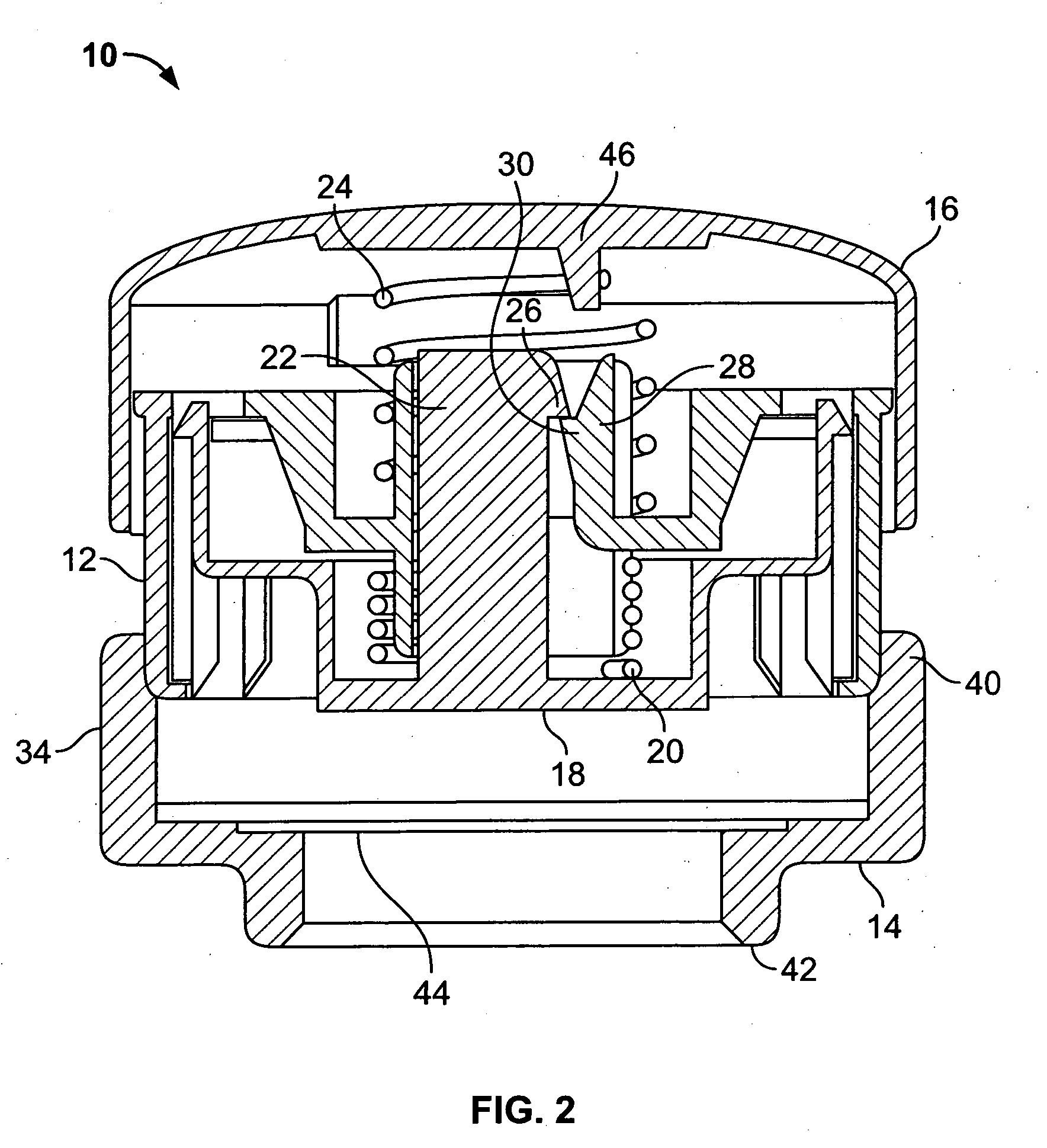Apparatus and method for piercing skin with microprotrusions
- Summary
- Abstract
- Description
- Claims
- Application Information
AI Technical Summary
Benefits of technology
Problems solved by technology
Method used
Image
Examples
example 1
[0055] Titanium microprotrusion embers comprising a circularsheet (sheet area was 2 cm2) having microprotrusions with the shape and configuration shown in FIG. 5 (microprotrusion length of 360 μm, and a microprotrusion density of 190 microprotrusions / cm2) were coated with the model protein vaccine ovalbumin. A 200 mg / mL aqueous coating solution of fluorescein-tagged ovalbumin was prepared. For coating, the microprotrusion members were immersed briefly in this solution, blown dry, and allowed to dry overnight at room temperature. Subsequent analysis demonstrated that the microprotrusion members were coated with ovalbumin at 200 to 250 μg / cm2.
[0056] A study was perfomed in hairless guinea pigs (HGPs) to evaluate ovalbumin absorption into the skin after short (5 second) application of the microprotrusion members. The system applied comprised a coated microprotrusion member adhered to the center of a low density polyethylene (LDPE) backing with the acrylate adhesive (8 cm2 disc). In on...
example 2
[0057] A second experiment was performed with dry-coated ovalumin to compare delivery following impact and manual application using a different titanium microprotrusion member and a longer application time. A 200 mg / mL aqueous coating solution of fluorescein-tagged ovalbumin was prepared. The microprotrusion members (microprojection length 214 μm, no retention feature, 292 microprojections / cm2, 2 cm2 disc) were immersed briefly in the coating solution, blown dry and allowed to dry overnight at room temperature. Subsequent analysis demonstrated that the microprotrusion members were coated with ovalbumin at 200 to 250 μg / cm2.
[0058] The delivery study was perfomed in hairless guinea pigs (HGPs). The system applied comprised a coated microprotrusion members adhered to the center of a LDPE backing with acrylate adhesive (8 cm2 disc). In one group of five HGPs, microprotrusion member application was performed with an impact applicator (0.2 J / cm2 in less than 10 msec) and the system was r...
PUM
 Login to View More
Login to View More Abstract
Description
Claims
Application Information
 Login to View More
Login to View More - R&D
- Intellectual Property
- Life Sciences
- Materials
- Tech Scout
- Unparalleled Data Quality
- Higher Quality Content
- 60% Fewer Hallucinations
Browse by: Latest US Patents, China's latest patents, Technical Efficacy Thesaurus, Application Domain, Technology Topic, Popular Technical Reports.
© 2025 PatSnap. All rights reserved.Legal|Privacy policy|Modern Slavery Act Transparency Statement|Sitemap|About US| Contact US: help@patsnap.com



